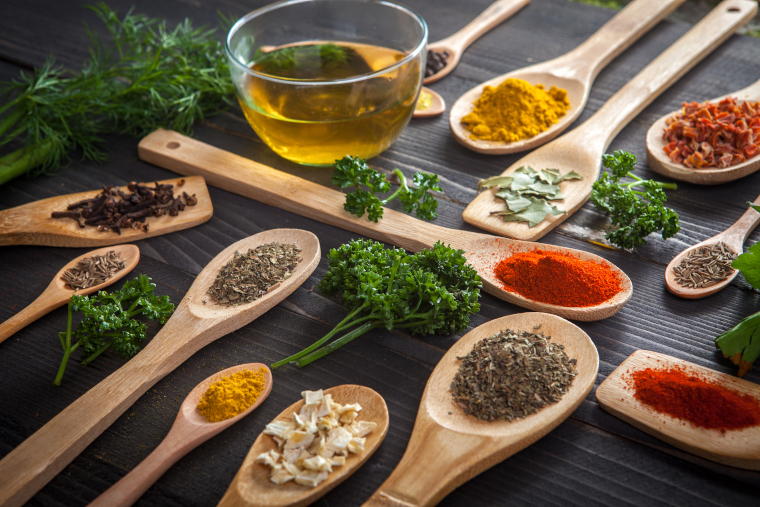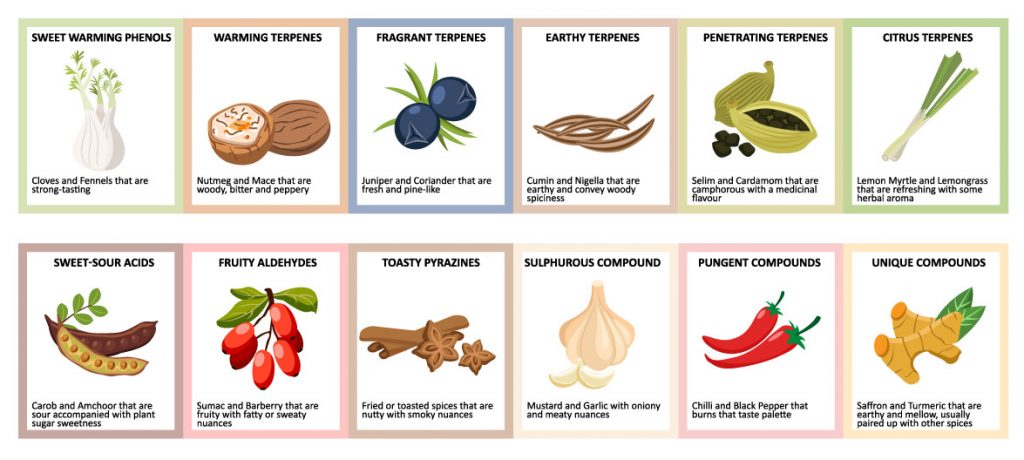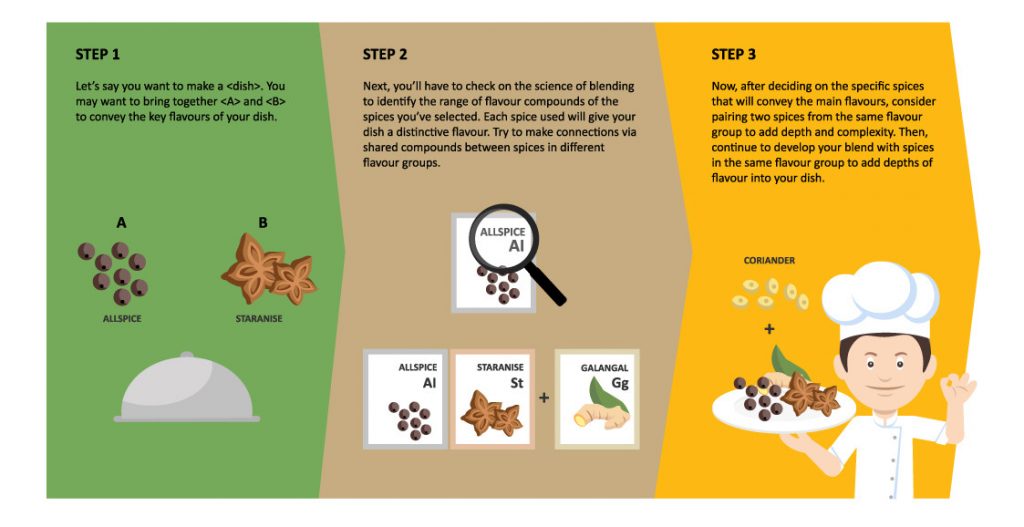Flavour is Part Taste, Mostly Smell
We often use herbs and spices when we cook to add flavour to our foods. Did you know that it is actually not the good taste alone but the alluring smell of a dish that makes our mouth water instantly? Spices have its own unique flavour compounds, tiny molecules that when goes in the mouth waft up the throat as a vapour into the nose, tricking you into thinking that you got the flavour at your tongue.
Southeast Asia cuisine is predominantly flavoured by local herbs and spices, with secret recipes often passed down through generations. Complexity increases with each extra spice, and so will pleasure – research shows that the greater the range of flavours and mouth sensations in a dish, the tastier it will be. Hence, the key to unlocking true creativity in the use of spices in cooking is to master flavour compounds.
At 360Foodsensmosis, one of our specialities is formulating ready-to-cook spice premixes. We make our spice premixes using natural herbs and spices to keep the authentic flavours. Let us unlock the infinite dimension of flavours together and create easy to use recipes.

Flavour Compounds
Herbs are the green, leafy parts of plants that are long valued for their medicinal properties and flavourful aromatics. Although widely used to elevate dishes and add flavour, herbs are actually potent weapons filled with defensive chemicals.
Try chewing on an oregano leaf, you will definitely be irritated by its acrid and overpowering scent. But this does not deter us from consuming herbs, as we can cook: dilute herbs which transforms this potent weapon into edible flavour enhancers.
Most herbs we use today belong either to the mint (sage and basil) or the carrot (fennel and dill) family. It is an uphill task to identify the wild origins of herbs, as it has spread across the world early in human history, although many herbs are said to have stronger association with either Asian or European cuisines.
Spices
Spices are extracts of fruits, barks, roots or dried seeds that have been used for centuries for flavouring, colouring and preserving food. Typically, a spice has a unique mixture of phytochemicals like phenol and terpenes. The flavour of spices is released as its aromatic oils within releases chemicals when in contact with heat.
Although pepper and cardamom are widely used spices globally, there are many regional cuisines that use specific spice mixtures that vary in composition from place to place or even from one maker to another.
We
have been living in a world of SPICES from the day we are born; where Spices spreads it Power and Effluence making its presence known without the need for words.Experience
is the only expression that can be used to describe the Art of Spices that will be understandable when the taste sensation to an overall meal comes to an end leaving behind a lingering mystique identity.
Unlike
mankind where water is life; SPICES defines its character when its dehydrated that surface during the journey of crossing paths between having and losing moisture unleashing the embedded flavour from within.
Peace
is the love that is spread from SPICES that is ever adaptable regardless of the condition it is being treated as a whole or grounded; placing the culinary journey above all to impart the flavour leaving memories for the next descendent.
Bare
identity towards the respect for the union of SPICES and Herbs where many comes afar to cultivate its ascendant in a gastronomy that reflects their culture they can call their own.
Balance
Like the QI in Tai-Chi and life-force compose in Ayurveda manifest the elements that aggravate SPICES the strength to the taste and harmonises one’s soul.



